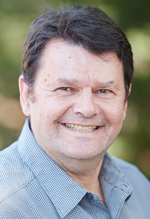Wireless Industry Grapples with mmWave 5G - Analog Devices
The wireless communications industry faces numerous economic and performance challenges in 2018, not the least of which is the adoption of millimeter-wave 5G frequencies at 28 and 39 GHz. The requirement to manage multiple independently-steered beams is creating new levels of architectural innovation and raising issues of flexibility, cost and power dissipation related to partitioning between digital and analog beamforming. On one hand, digital beamforming is a more flexible approach, but requires a full transceiver per element and significant digital processing, which places challenges on size and power. Analog beamforming, meanwhile, greatly reduces the number of transceivers but makes multiple beam management less flexible.
This drives a key question that the industry must address in 2018: can the transmit/receive module be monolithically incorporated into the beam-former or transceivers, or will it need to be manufactured using a different process technology? The answer will only become clear once link budgets, cost and size trade-offs are better understood.
SiGe, fine-line CMOS, GaN and SOI Make Strides
The RF and microwave sector, which once was dominated by simple function GaAs HBT and pHEMT MMICs, is seeing the emergence of SiGe and fine-line CMOS. These are quickly displacing many functions in the cellular range that demand higher levels of integration, while GaAs MMICs are retaining the most challenging, front-end sockets at higher frequencies. At the same time, highly integrated CMOS solutions for higher volume applications that require mixed signal and digital back-ends will continue to grow. Higher-performance GaN and SOI technologies are already in development that will challenge conventional TWTs and hybrids – with GaN extending beyond 100 W for solid-state MMIC power amplifiers and into the kW range for modules. Similarly, SOI has surpassed the performance of other RF switch technologies in a smaller footprint and has demonstrated impressive RF and microwave transceiver dynamic range.
The Role of Defense Electronics in RF and Microwave Growth
Defense electronics will remain an RF and microwave growth driver in 2018, and program such as the Defense Innovation Initiative and DARPA’s Electronics Resurgence Initiative will ensure continued investments. Among the technologies of particular interest to the U.S. Defense Department, communications, missile defense, smart munitions, electronic surveillance and countermeasure systems, and space-based electronics will all rely heavily on advances in RF and microwave design, including phased-array antennas and high-efficiency, solid-state power amplifiers.
 John Cowles has over 25 years of experience in the semiconductor industry. He joined ADI Northwest Labs in 1998 from TRW Aerospace and Defense as a RFIC designer under Fellow Barrie Gilbert. He became the design center manager in 2003, responsible for high performance RFIC product development targeting infrastructure applications. During that time, he was also responsible for directing ADI’s broad investments in microwave radios. Since 2014, he has been a General Manager in the RF and Microwave business unit, responsible for a broad line of baseband, IF, RF and microwave components and solutions. John earned a BSEE in 1987 from the University of Pennsylvania and a PhD in EE in 1994 from the University of Michigan.
John Cowles has over 25 years of experience in the semiconductor industry. He joined ADI Northwest Labs in 1998 from TRW Aerospace and Defense as a RFIC designer under Fellow Barrie Gilbert. He became the design center manager in 2003, responsible for high performance RFIC product development targeting infrastructure applications. During that time, he was also responsible for directing ADI’s broad investments in microwave radios. Since 2014, he has been a General Manager in the RF and Microwave business unit, responsible for a broad line of baseband, IF, RF and microwave components and solutions. John earned a BSEE in 1987 from the University of Pennsylvania and a PhD in EE in 1994 from the University of Michigan.

